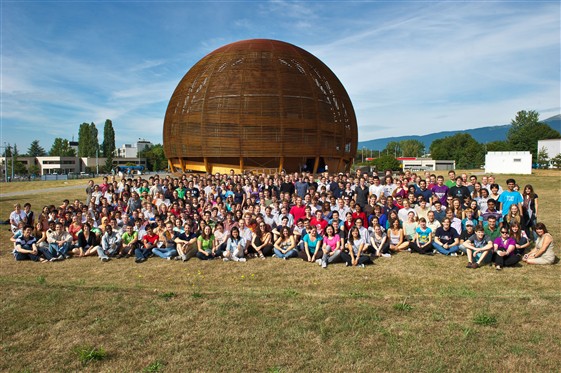The importance of the Summer Student Programme
As every year, the summer months see the arrival at CERN of summer students. Over a seven-week period beginning on the first Tuesday in June, students arrive at CERN for stays that will last from 8 to 13 weeks. This means that some of them are already coming to the end of their stay.
For 2010, a total of almost 1 650 applications was received: 950 from students coming from Member States and 700 from other countries. Of these, 237 applications were accepted: 127 from the Member States,10 from the USA, 5 from Japan and 4 from Israel, and 91 from other countries. Each year, there are students from new countries, and this year CERN is welcoming students from the Philippines for the first time. “The number of applications has been growing steadily since the programme started in 1962,” reports Sharon Hobson, coordinator of the Summer Student Programme in the Recruitment Service. “The vast majority are physics students, although the number of students in engineering and computer science programmes has grown.”
The participants’ schedule at CERN is determined by the daily rhythm of Globe lectures, which cover a variety of subjects. Students also have an opportunity to put what they have learned into practice in a science project assigned to them by their supervisor. “Students are free to attend the courses that they find interesting and useful for their project. The Globe lectures always draw a full house,” notes Sharon Hobson. “The way the projects are assigned is like this: the supervisors come up with a number of projects and then a computer program selects the students and assigns each of them a project in a field relevant to their studies.”
To be eligible for the Programme, students must have completed at least three years’ university studies. In addition, the university teachers are asked to send a report that will be used to assess the student’s profile. The programme for the following year is generally posted on the internet in September. Interested students can study the programme and apply. Applications have to be sent before the end of January. Selections are then made in March, and the applicants are informed in April.
The programme represents a valuable opportunity for students as a potential springboard to a professional career. It allows them to acquire experience while working in an attractive environment. As Sharon Hobson observes: “There is an excellent atmosphere among the Programme’s participants and they develop a strong bond. Just to illustrate: last year’s students purchased a sound system, which they installed in the Pump Hall, where the students hold their social events. There is now a plaque on the amplifier that reads, ‘From Summies 2009 to all future Summer Students – Rock On!’”
For further information about the 2010 Summer Student Porgramme, visit the dedicated page.


